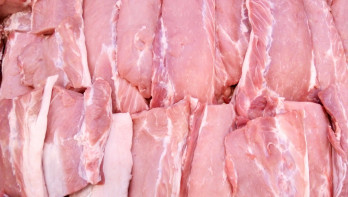News Pigs & Pork
Van Rooi also steers towards lighter pigs
After Vion and Tönnies, Van Rooi has also adjusted its weight table. The slaughterhouse indicates that the amount of fat in the meat complicates sales. Steering towards lower slaughter weights is a clear trend.
In recent years, the weights of pigs have increased significantly, as the slaughterhouse writes to its suppliers. This results in fatty parts of the pigs becoming fattier. The slaughterhouse reports that they are receiving too many fatty pigs. Therefore, Van Rooi is adjusting the tables to steer towards lower slaughter weights. The new table ranges from 81 kilograms to 110 kilograms. If a pig farmer exceeds 103 kilograms, the slaughter price is reduced. The slaughterhouse's target weight is slightly below that. According to Van Rooi, the ideal weight is 97.99 kilograms.
European market
Steering towards leaner meat is a clear trend in the pork market. Vion and Tönnies had already adjusted their tables earlier. To meet the taste of the Asian market, slaughterhouses previously aimed for higher slaughter weights. In 2014, the slaughter weights ranged between 92.58 and 95.73 kilograms. In 2017, the weights increased to between 94.80 and 97.40 kilograms. In 2024, the slaughter weight peaked at 102.90 kilograms, only to drop to 98.90 kilograms.
Now that exports to third countries are declining, the sector is steering towards lighter pigs again. This should make it easier to sell meat on the European market.




